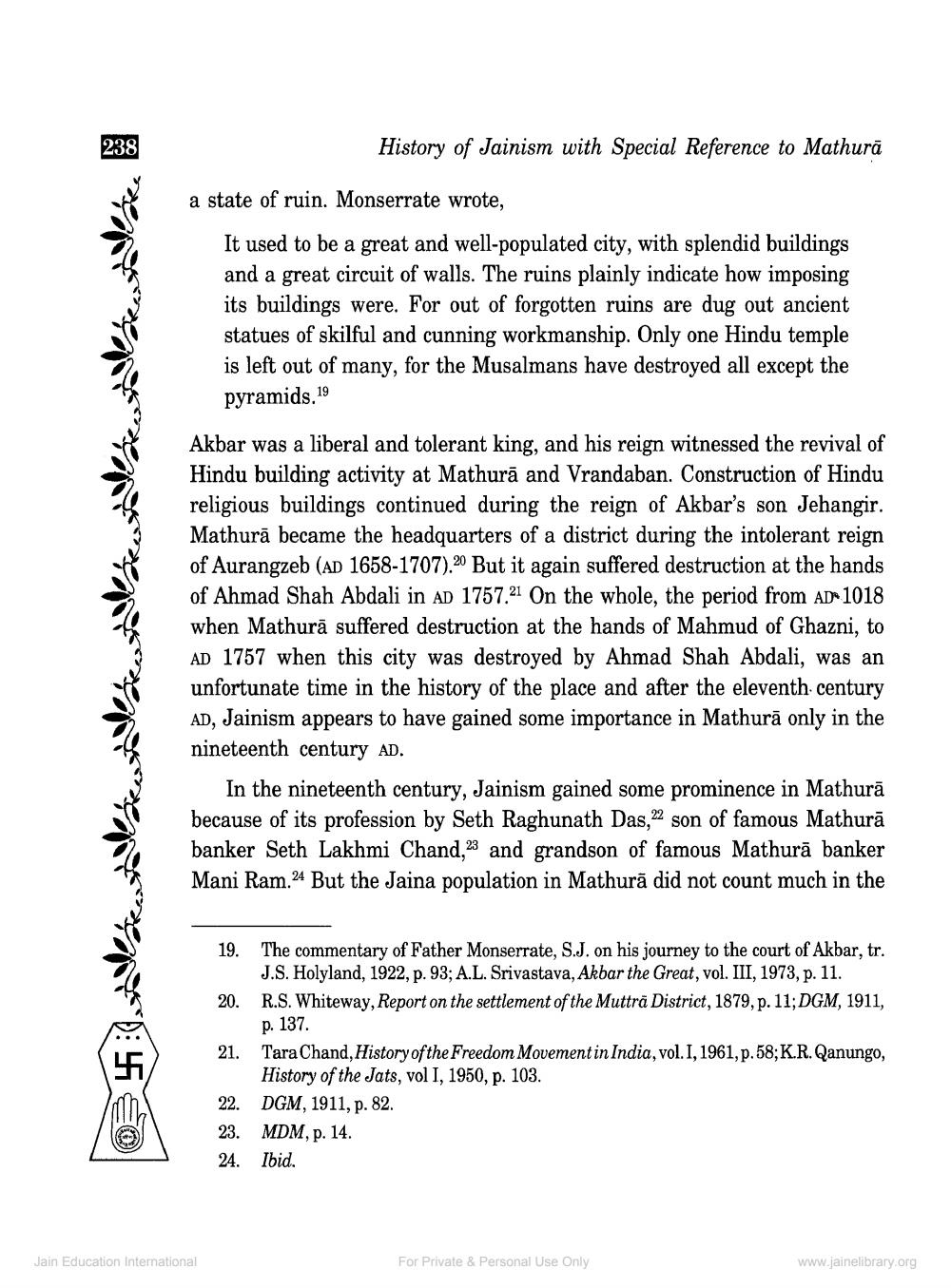________________
238
急卐
a state of ruin. Monserrate wrote,
It used to be a great and well-populated city, with splendid buildings and a great circuit of walls. The ruins plainly indicate how imposing its buildings were. For out of forgotten ruins are dug out ancient statues of skilful and cunning workmanship. Only one Hindu temple is left out of many, for the Musalmans have destroyed all except the pyramids. 19
Akbar was a liberal and tolerant king, and his reign witnessed the revival of Hindu building activity at Mathura and Vrandaban. Construction of Hindu religious buildings continued during the reign of Akbar's son Jehangir. Mathura became the headquarters of a district during the intolerant reign of Aurangzeb (AD 1658-1707).20 But it again suffered destruction at the hands of Ahmad Shah Abdali in AD 1757.21 On the whole, the period from AD 1018 when Mathura suffered destruction at the hands of Mahmud of Ghazni, to AD 1757 when this city was destroyed by Ahmad Shah Abdali, was an unfortunate time in the history of the place and after the eleventh century AD, Jainism appears to have gained some importance in Mathura only in the nineteenth century AD.
In the nineteenth century, Jainism gained some prominence in Mathurā because of its profession by Seth Raghunath Das,22 son of famous Mathurā banker Seth Lakhmi Chand,23 and grandson of famous Mathurā banker Mani Ram.24 But the Jaina population in Mathura did not count much in the
Jain Education International
History of Jainism with Special Reference to Mathura
19. The commentary of Father Monserrate, S.J. on his journey to the court of Akbar, tr. J.S. Holyland, 1922, p. 93; A.L. Srivastava, Akbar the Great, vol. III, 1973, p. 11.
R.S. Whiteway, Report on the settlement of the Muttra District, 1879, p. 11; DGM, 1911, p. 137.
20.
21.
22.
23.
24.
Tara Chand, History of the Freedom Movement in India, vol. I, 1961, p. 58; K.R. Qanungo, History of the Jats, vol I, 1950, p. 103.
DGM, 1911, p. 82.
MDM, p. 14.
Ibid.
For Private & Personal Use Only
www.jainelibrary.org




